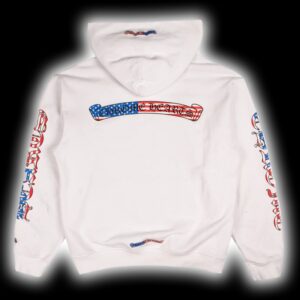Watches are more than just instruments for telling time; they are intricate marvels of engineering and craftsmanship. Whether it’s a classic mechanical watch or a cutting-edge smartwatch, the beauty of a timepiece lies in the synergy of its various parts. Understanding the key watch components provides not only a deeper appreciation for horology but also insights into how precision and style are balanced within such a small object.
In this article, we explore the primary watch components, their roles, and why each plays a crucial part in both functionality and aesthetics.
1. The Movement: The Heart of the Watch
The movement, also known as the “caliber,” is one of the most important watch components. It is the mechanism that powers the watch and drives the hands to move. There are three main types of watch movements:
- Mechanical Movement: Powered by a wound spring and operates through gears and springs. It requires manual winding or self-winding through motion (automatic).
- Quartz Movement: Powered by a battery and regulated by a quartz crystal. It’s highly accurate and requires less maintenance.
- Smartwatch Movement: Digital or hybrid, powered by rechargeable batteries and equipped with sensors and microchips.
Regardless of the type, the movement is what breathes life into the watch.
2. Case: The Watch’s Protective Shell
The case houses all internal watch components, protecting them from dust, water, and shock. Watch cases come in various materials such as stainless steel, titanium, ceramic, or precious metals like gold and platinum. The design of the case often determines the watch’s style—sporty, elegant, or minimalist.
Watch cases also vary in shape, from classic round to square, tonneau (barrel-shaped), and even asymmetrical styles in some designer models.
3. Crystal: Clarity and Protection
The crystal is the transparent cover over the dial that protects the face of the watch. The three common materials used for crystals are:
- Acrylic: Lightweight and shatter-resistant, but prone to scratches.
- Mineral Glass: More scratch-resistant than acrylic but can crack under high impact.
- Sapphire Crystal: Highly scratch-resistant and commonly used in luxury watches.
A high-quality crystal ensures durability and optimal visibility of the dial and other watch components underneath.
4. Dial: The Face of Time
Often referred to as the face of the watch, the dial displays the time and sometimes additional complications such as date windows, moon phases, or chronographs. Dials come in various styles, colors, and textures, often contributing the most to a watch’s visual appeal.
Markers (hour indices), numerals, and brand logos are all integrated into the dial, showcasing the watchmaker’s attention to detail. Luminous materials are often applied to dials and hands for visibility in low-light conditions.
5. Hands: Indicators of Time
The hands are the moving watch components that indicate hours, minutes, and seconds. While traditional watches use two or three hands, some advanced models include additional hands for features like dual time zones, GMT functions, or chronograph functions.
Hands can be stylized in numerous ways—sword, dauphine, leaf, baton, or skeleton—to match the overall aesthetic of the timepiece.
6. Crown: Command Center
The crown is a small knob, typically located on the side of the watch case. It’s used to set the time and date, wind the movement (for mechanical watches), and control other functions in watches with complications. Some crowns are screw-down for added water resistance, especially in diving watches.
In smartwatches, the crown may serve as a digital interface or navigation tool.
7. Bezel: Functional Frame
The bezel is the ring surrounding the watch crystal. Depending on the watch design, it can be decorative or functional. In dive watches, the bezel is often unidirectional and marked with a 60-minute scale to track elapsed time underwater. In tachymeter models, the bezel helps measure speed based on travel time.
Rotating or fixed, the bezel is one of the watch components that combine functionality with aesthetics.
8. Strap or Bracelet: Style and Comfort
The strap or bracelet secures the watch to your wrist and significantly influences the overall look and feel. Common materials include:
- Leather: Classic and elegant.
- Metal: Stainless steel or precious metals, offering durability and a polished look.
- Rubber or Silicone: Used in sports and dive watches for flexibility and water resistance.
- NATO or Fabric Straps: Lightweight, casual, and often interchangeable.
Straps are among the easiest watch components to replace or customize, making them essential for personal style.
9. Case Back: Often Overlooked but Important
The case back is the underside of the watch that rests against your wrist. It may be solid or transparent (exhibition case back) to reveal the movement inside. Case backs often include engravings such as the model number, brand, water resistance rating, and other specifications.
In some luxury models, engraved or skeletonized case backs serve as artistic extensions of the watchmaker’s craftsmanship.
10. Additional Components and Complications
In more complex watches, additional watch components called “complications” enhance functionality. These include:
- Chronograph: A stopwatch feature with sub-dials.
- Tourbillon: A rotating cage that reduces timing errors (found in high-end watches).
- Perpetual Calendar: Automatically adjusts for different month lengths and leap years.
- Power Reserve Indicator: Shows how much energy remains in the movement.
These components represent the pinnacle of horological engineering and artistry.
Conclusion
Understanding the intricacies of watch components helps deepen one’s appreciation for both the mechanical precision and aesthetic brilliance behind every timepiece. From the powerful movement to the elegant dial and functional bezel, each part works in harmony to deliver accurate timekeeping and stylish expression. Whether you’re a collector, a watch enthusiast, or simply curious, knowing these elements is essential to understanding what makes a watch not just an accessory, but a masterpiece.



